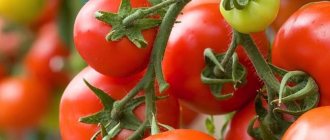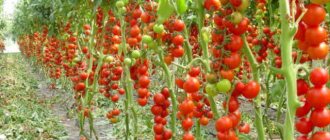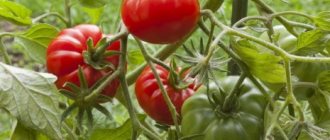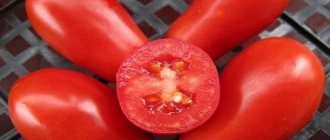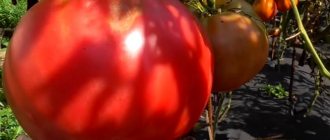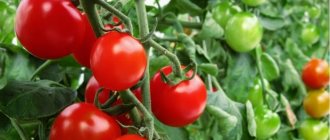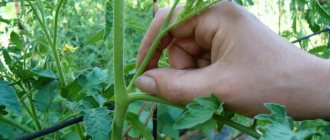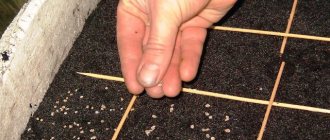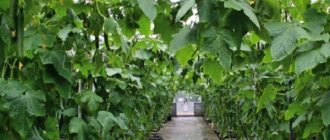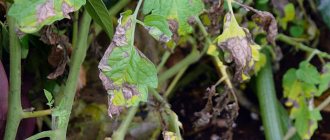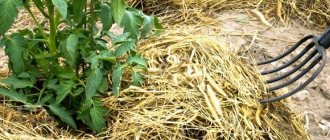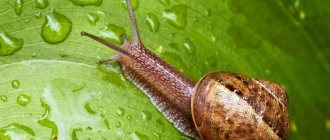Territorial climate
The Moscow region is distinguished by its continental-moderate temperatures. Winter here is quite mild, without severe frosts. Summers are mostly humid with frequent rain. The maximum temperature reaches 19 degrees. And for such weather you need to choose good seed material. Before we look at the question of how tomatoes are planted in open ground in the Moscow region, we will consider the most interesting representatives for cultivation.
Varieties and hybrids of tomatoes
Of course, every gardener tries to find the best varieties and seeds of tomatoes for open ground in the Moscow region. Today there is a large choice, many summer residents praise different varieties, because a lot depends on personal preferences and requests. Here is a list of those that have proven themselves well and are popular:
- Sultan F1 is a Dutch hybrid, short. It has good yield and resistance to temperature changes.
- Batyanya is an excellent high-yielding variety for open ground. Harvested tomatoes are stored for a long time.
- Honey Drop is a tall variety, the fruits are bright yellow, small, and resemble a drop.
- Severyuga is a large-fruited variety, unpretentious and productive.
- Demidov is a variety that is distinguished by high resistance to late blight. The plant is small, compact; up to 6-7 bushes can be grown on one square meter.
- Beach cherry is a productive, unpretentious variety.
All the best and rich harvests to you!
According to the structure of the bushes, tomatoes are divided into:
- non-standard;
- standard;
- potato-shaped.
Non-standard ones are distinguished by thinner stems that lie down during the fruiting period, as well as large, slightly corrugated leaves.
Standard tomatoes are distinguished by compact bushes with fairly thick stems, strongly corrugated leaves, medium in size, with short petioles.
Potato-shaped (large-leaved) tomatoes are quite rare, and they are called so because of the leaves, which are shaped like potato leaves.
Tomato varieties
Today there is a large selection of seeds. Below we have given varieties of tomatoes for open ground in the Moscow region, which take root best in this climatic zone:
- Pink honey On an open plot of land, the bush does not grow more than 80 cm in height. The fruits are large. They are distinguished by their bright orange hue and sweet taste.
- Siberian king. This variety belongs to the representatives of the mid-season family. The bush is tall. Its height can reach from 1.5 to 2 meters. Definitely requires tying. Ripe fruits are very large. Their weight reaches 700-800 grams. The tomatoes are heart-shaped and yellow in color.
- Black Mikado. The fruits form quickly. The color of the tomato ranges from dark red to brown. The pulp is sugary, but with a slight sour aftertaste.
- Truffle. This variety is ideal for pickling. Tomatoes on the bush grow in different shades: yellow, red, dark brown. The tomatoes are small in size.
- Koenigsberg is golden. Among all yellow tomato varieties, these have fleshy, juicy and sweet flesh. The weight of one fruit reaches 300-400 grams. Growing tomatoes in open ground in the Moscow region does not require any additional care.
- Wonder of the world. This is the brightest representative of yellow varieties. Due to its elastic pulp, it is suitable for salting and pickling. The fruits are tasty, but moderately sour. This is a late variety of tomato that is practically not susceptible to diseases.
- Stellate sturgeon. This is a representative of a semi-determinate variety. Tomatoes of this type are most often found in open ground in the Moscow region. The height of the bushes can reach 180 cm.
- Budenovka. Small tomato bushes produce large fruits that are distinguished by their sweet taste and fleshy pulp.
- Nobleman. This is a mid-season tomato variety. The tomato pulp has a bright crimson hue. The weight of one tomato is about 500 grams.
- Dad. The tall bush is completely covered with tomato fruits. The variety is suitable for consumption fresh or salted. Tomatoes cannot be stored at all. The fruits are red with a yellow spot at the base.
- Honey drop. Such tomatoes in open ground in the Moscow region will decorate any garden bed. Now on the plot you can grow your own cherry tomatoes, which have a bright yellow color and a sweet taste.
We have listed the most common varieties. Now it’s worth considering the features of growing tomatoes.
Tomato storage
Unripe fruits may turn red if stored in a warm room. Usually they are laid out in one layer on the windowsill. They also use a method in which the fruits are immersed in water at a temperature of 65 degrees for 2-3 minutes, and then cooled in a basin of cool water. After drying, the vegetables are placed in special fruit boxes. Unripe tomatoes are laid out, alternating with ripe tomatoes. This method helps speed up the ripening process due to the fact that ripe fruits emit ethylene gas, which accelerates the ripening of other tomatoes.
The boxes are installed in a room with sufficient lighting. Otherwise, the tomatoes will have a weak color, and the ripening period will last longer. If it is necessary to lengthen the period of their ripening, then the temperature in the room is lowered to 10 degrees. Fully ripened tomatoes can be stored for up to 1.5 months, provided that the storage temperature is maintained between 5 and 10 degrees.
Preparing the land for planting
Before growing tomatoes, you need to think about the quality of the soil. Its preparation should begin in the fall. To do this, carry out the following steps:
- you need to free the land from old tops and grass;
- the cleaned soil should be sprinkled with Bordeaux mixture;
- We move on to fertilizing the soil, for this we add potassium chloride and superphosphate to the soil in a volume of 60 grams per square meter of soil;
- We dig up the soil before winter to a depth of 30-35 cm.
This is how we prepared the soil on the site for the new planting of tomatoes. But before that, we have to prepare seeds and grow seedlings. It’s worth telling about everything in order.
Maintaining the tomato gene pool from the world collection of VIR in the open ground of the Moscow region
Kozak Vladimir Ivanovich in the tomato fields
World collection of tomato samples of the All-Russian Research Institute of Plant Growing named after. N.I. Vavilova (VIR), presents a wealth of material for searching for sources and donors of economically valuable traits used in the selection of highly productive varieties and hybrids [1,2,8]. The tomato culture is distinguished by its high plasticity, productivity and multi-purpose use of fruits, which contain substances valuable for human nutrition, namely: vitamins C, B1, B2, B3, B9, PP, β-carotene, mineral salts and organic acids [1].
Tomato seeds begin to age from the time they are isolated from the fruit of the mother plant. In order to prevent loss of germination of samples, during storage it is necessary to carry out repeated sowings after 7-8 years in order to maintain the samples in the form in which they were introduced. And with the set of biological and economically valuable characteristics that were originally inherent in them [3, 7].
To maintain a tomato collection in open and protected ground, the correct selection of samples is important, since the variability of their biological and economic properties is not the same [6]. Growing conditions are reflected in the sowing and economically valuable characteristics of plants grown from these seeds.
From 1974 to 2004, the VIR collection was maintained in the amount of 25-70 specimens, along with the study of new acquisitions. Due to the reduction of VIR experimental stations, the volume of work has increased to 100 samples since 2005, and to 150 samples since 2011.
A number of samples reproduced at other stations are a mixture of two or three varieties, or even do not correspond to the descriptions at all. Therefore, in addition to restoring germination, it is also necessary to check reproductions.
The quality of seed preparation and the timing of sowing and growing seedlings determines the production of early and high yields of seeds from collection samples. In southern conditions, tomatoes are grown directly by sowing in the ground and using seedlings. In the conditions of the Moscow region, the best method is seedlings, using cassette technology, which helps maintain the integrity of the root system and does not require additional time for its rooting. As a result, the processes of fruit formation and ripening are accelerated and the growing season is shortened.
Primary preparation for growing seedlings
It is important to properly prepare the soil and boxes. Before planting, the latter are washed well with water and treated with a blowtorch, killing all pathogenic bacteria. Peat or clay pots and plastic cups are also suitable for growing seedlings. They should simply be washed thoroughly in warm water. Two weeks before sowing the seeds, all boxes are filled with soil and kept in a warm place. Immediately 1-2 days before, the soil should be shed with a weak solution of potassium permanganate, that is, potassium permanganate, in a ratio of 10 grams of the substance per 10 liters of water.
Rules for sowing tomatoes for seedlings
To get healthy shoots, you need to sow the tomatoes correctly and prepare the seeds for planting.
Seed preparation
Often, stores sell seeds processed by the manufacturer, which do not need to be prepared for sowing. They can be planted dry or pre-germinated.
Untreated seed material should be disinfected before sowing. To help sprouts appear faster, the seeds are soaked in a solution of a growth stimulator.
By the way! There is an article on our website that describes step by step how to prepare tomato seeds for sowing. Just click on the link.
Preparing soil and containers
It is not recommended to use soil from the garden to grow seedlings. It may contain pest larvae, fungal spores and disease viruses. Before sowing, such soil will have to be disinfected with special preparations. This could be a solution of potassium permanganate, Fitosporin or some fungicide.
You will be interested to know: How to properly collect and store tomato seeds at home
The easiest way is to buy ready-made substrate for tomato seedlings in the store. It should be loose and nutritious. There is no need to treat such soil.
Attention! To prevent “black leg” on seedlings, add a glass of wood ash to a bucket of soil.
You can sow tomatoes for seedlings in boxes, containers or other not very high suitable containers with drainage holes.
You can sow tomatoes in separate cups or cassettes. But it is recommended to pick these plants, since when buried on the trunk they form additional roots. As a result, the bushes are stronger and more powerful.
Preparation of seed material
It is not recommended to plant untested and unprepared seeds. If you bought seed in a store, it may turn out that not all of them will sprout. To weed out substandard conditions, do the following:
- Fill a glass with water.
- Add 10 grams of table salt to it.
- Sprinkle out the seeds.
- The seed material that has floated up must be removed from the glass and thrown away, and the rest should be washed in running water.
To protect future seedlings from diseases, the seeds should be disinfected. To do this, do the following:
- A weak solution of potassium permanganate is diluted in a glass.
- Place clean and sorted seeds.
- Leave for 20-30 minutes.
- Rinse.
- Dry it.
Now, in order for growing tomatoes in open ground in the Moscow region to be successful, we will plant seedlings according to all the rules, which in the future will give a large harvest of tomatoes.
Which variety should I choose?
Every year you can see new varieties of different crops on store shelves. This is all thanks to the work of breeders. Here we will provide a list of the best productive tomato varieties for the Moscow region, according to reviews from experienced gardeners.
For greenhouses
Mostly tall and large tomatoes are grown in greenhouses, as well as low-growing varieties, from which the harvest can be obtained earlier than anyone else.
The best early tomatoes:
- White filling;
- Androdem hybrid;
- Sultan F1;
- Nevsky;
- Tyler F1.
Low growing varieties:
- Irishka F1;
- Alenka;
- Red Fang;
- Karotinka;
- Nectar.
Large-fruited:
- Siberian sprinter;
- Stellate sturgeon;
- Rose honey;
- Search F1;
- Cardinal.
For open ground
Without shelter in central Russia, tomato varieties that are resistant to diseases and temperature changes should be grown. The most popular varieties:
- Lorraine beauty;
- Mongolian dwarf;
- Iceberg;
- Cheerful gnome;
- Shchelkovsky;
- Anyuta;
- Sanka;
- Danko.
Planting seeds
To ensure that the seedlings turn out well, we will tell you a few secrets:
Tip 1. To ensure high quality seedlings, the seeds are planted in a box at a distance of 3 cm from each other. This will provide each root with room to grow and gain strength in the future.
Tip 2. Don’t forget that when the height of our seedlings reaches 6-8 cm, you can apply the first complex fertilizer.
Tip 3. After each watering, sprinkle the stems with soil. This will allow you to pick at a later date.
Tip 4. When the seedlings have grown large, before planting them in open ground, it is better to keep them in a greenhouse for a while. It is advisable to maintain a daytime temperature of about 18 degrees and a night temperature of about 6.
Tip 5. To keep the seedlings strong, you can harden them. To do this, you need to have good ventilation of the greenhouse. If there is no frost, it is recommended to leave the greenhouse open overnight.
Tip 6. During the entire period of seedling growth, you need to fertilize at least three times. It is made using urea and superphosphate.
When to sow tomatoes for seedlings in 2021 in the Moscow region
The timing of sowing tomatoes for seedlings in central Russia depends on the selected variety and where the vegetables will be grown. For greenhouses, plantings are made earlier, and for open ground, two to three weeks later.
First you need to decide how many days before planting the seeds you need to sow the seeds. To do this, you need to know the age of the seedlings at which they can be planted in the ground:
- early ripening varieties: 40-50 days;
- mid-season varieties: 50-60 days;
- late varieties: from 60 to 70 days.
Also keep in mind that tall tomatoes take longer to grow than short plants.
Add another 5-7 days to this until shoots appear.
As a result, the timing of planting tomatoes for seedlings in the Moscow region is as follows:
- varieties of large tomatoes - early March;
- tall tomatoes for growing in greenhouses - late March;
- for greenhouses, early tomatoes - after March 15;
- for greenhouses, low-growing tomatoes - the first and second ten days of April;
- for open ground early tomatoes - early April
By the way! According to folk wisdom in the Moscow region and other regions of the Middle Zone, tomatoes should be planted as seedlings after March 8th.
When to plant according to the Lunar calendar
Favorable days when to sow tomatoes for seedlings in the Moscow region in 2021 according to the Lunar calendar:
- January 17-17, 21-22, 26-27;
- February 12-14, 17-19, 22-24;
- 1-4, 12, 17, 18, 22, 23, March 29-31 (the highlighted dates are the most favorable);
- 8-9, 13-14, 18-19, 25, 26, April 28 (dedicated days for planting are best).
You will be interested to know: Preparing tomato seeds and sowing seedlings according to the Lunar calendar
In winter, planting can be done if there is a heated greenhouse. Seedlings are planted in it in April, and an early harvest is obtained in June.
How to plant correctly
Before you plant tomatoes in open ground in the Moscow region, you need to prepare the soil after winter. This is done as follows:
- Fertilizing the soil. For this they use manure - 7 kg, superphosphate - 50 grams, urea - 30 g and potassium chloride - 40 g. Everything is calculated per square meter.
- We dig up the ground and harrow it.
- Preparing holes for planting. Their size should be approximately 30 cm.
- It is recommended to plant each tomato root at a distance of 50 cm from each other.
- Every 4th or 5th row, leave a path, which can be 50-60 cm wide.
- It is better to plant tomatoes in open ground in mid-May.
- You can immediately make the first fertilizer for tomatoes in the garden. To do this, mix mullein, urea, superphosphate and wood ash in 10 liters of water.
Now all that remains is to properly care for it and wait for the treasured harvest.
Greenhouse or open garden bed: pros and cons
The Moscow region cannot be called a gardener's paradise, especially when it comes to growing such a heat-loving crop as a tomato. Unfortunately, tomatoes that arrived in our country from distant South America do not grow at temperatures below +100C. Under such conditions, growing tomatoes in open ground in the Moscow region is possible only by the end of May, when night temperatures exceed the established value. A greenhouse allows you to speed up the process of growing tomatoes, since favorable conditions are established 2-3 weeks earlier. At the same time, there is no clear opinion among farmers about where to grow tomatoes, since each of these options has its own advantages and disadvantages:
- The greenhouse allows you to plant tomato seedlings earlier and harvest vegetables. In greenhouse conditions, plants do not experience sudden changes in night and day temperatures; short-term spring and autumn frosts are not scary for them. However, greenhouse conditions are favorable not only for growing tomatoes, but also for the development of harmful microflora, fungi and bacteria that cause diseases of tomatoes, causing damage to plantings and harvests. The greenhouse gets very hot during the daytime, and the temperature can only be reduced by ventilation. If it is installed in a dacha, remote from the place of permanent residence of the owners, then it is not possible to regularly open and close doors and vents, which means that the tomatoes in the greenhouse will most likely simply burn.
- Open ground “sets” strict deadlines for the farmer to grow tomatoes, since spring frosts and autumn cold can destroy tomatoes in the beds. Rainy weather in the Moscow region in summer and the early arrival of autumn provokes the development of late blight, which damages plants and fruits. At the same time, open ground solves the issue of pollination of tomatoes, does not require financial costs for the purchase of materials, and partially solves the issue of watering tomatoes. You can eliminate the possibility of tomatoes freezing in unprotected conditions in the spring by using temporary shelter on arches. Open ground is the only correct solution for growing tomatoes in the garden without regular supervision from the owners.
Such contradictions are the basis for discussions among farmers. At the same time, each gardener in the Moscow region decides for himself in what conditions to grow tomatoes. Having chosen the appropriate cultivation option, you need to select the best variety, which is zoned for the area and can give the farmer a large number of tasty tomatoes when grown in the given conditions.
Tomato care
So, now you have tomatoes growing in open ground on your plot in the Moscow region. Care must be carried out timely and correctly. Let's look at how to do this:
- In the first days of life of tomatoes under a blue sky, watering should be carried out by irrigation. 2 liters of water are recommended for each bush;
- a month after planting the seedlings, you can apply a second complex fertilizer;
- It is worth removing all the stepsons on time; this can be done every 8 days, when their size becomes 3-4 cm;
- remember that the soil should always remain moist.
Now you know how to care for and plant tomatoes in open ground in the Moscow region.
Features of the landing site and its preparation
Growing tomatoes in open ground is best done in previously prepared areas. Particular attention should be paid to the selection of such a site.
- The site should be in direct sunlight most of the daylight hours. This will make the fruits sweet and speed up their ripening.
- No nightshades or corn should have grown in front of the tomatoes. Tomatoes should also not be grown in the same area for two years in a row.
- Areas with fresh manure are also not recommended.
- Tomatoes feel best in areas where carrots, turnips, legumes, cabbage or lettuce grew last year.
- It is better to plant seedlings in elevated places.
The soil for growing tomatoes must be prepared in the fall. To do this, you should lay out leaves and humus on the site, which will release all the necessary nutrients into the soil by spring. Also in the fall, potassium and phosphorus fertilizers should be added to the soil. Ammonium nitrate should be added to the soil in the spring.
Harvesting
By devoting time to growing and caring for tomatoes, you will get good results. You can pick tomatoes in the open ground in the Moscow region when they reach blanzhe ripeness or just turn white. Due to the lack of sunlight, many gardeners use a method called ripening. It helps preserve fruits from rotting. To do this, collect all the tomatoes and place them in a room where ventilation is good and the temperature is kept between 22-24 degrees. This method is used by almost all summer residents who grow tomatoes in open ground in the Moscow region. The temperature allows the fruits to ripen and not spoil.
Picking tomatoes
The timing of tomato harvesting depends on the variety, the characteristics of the region, and proper agricultural technology.
It is clear that there are more productive years and less productive years, but still hard-working gardeners manage to get good harvests even under unfavorable conditions.
The main harvest occurs in July-August.
Speaking in numbers, in early varieties it takes about 45-50 days from fruit set to ripening.
Usually ripe tomatoes are picked, as well as slightly unripe ones, which are sent for ripening.
This allows you to avoid infection of fruits with late blight, which likes to “appear” in August, when the main heat subsides and cold dew appears.
Covering plants with non-woven materials gives a good effect, but if this is not possible, then it is better to remove the fruits (even green ones).
Choosing soil for planting tomatoes
It is necessary to grow tomatoes in the Moscow region after several years, that is, alternate planting, because diseases and pests develop and can affect the new harvest. Tomatoes are characterized by dark chestnut soils, dark chernozems, heavy chernozems, and forest soils. Forest soils and dark chestnut soils are typical for the Moscow region.
If tomatoes are planted in the Moscow region for mass consumption for processing at some enterprises, then some tests are taken from the soil:
- analysis for acidity reaction;
- DNA analysis of present infections.
All analyzes are carried out in special laboratories by agronomists who have undergone safety training and are able to work with the material. The earth should not be acidic, even oxidized. The DNA of various insects or their eggs can be present at a soil depth of 25 cm. And to prevent poor yields, the soil is treated with insecticides and fungicides in advance.
After treatment against pests, as mentioned above, the soil should be fertilized with mineral water and organic matter and thoroughly plowed. After planting, it is recommended to roll the soil and harrow in the spring.
If suddenly seedlings are being planted in the Moscow region, then it is also necessary to take into account weather conditions; it is advisable that the air temperature does not exceed 18 0C; planting seedlings should be treated more strictly, since they may simply not grow together with the soil and die soon. After all agronomic conditions have been carried out, agronomists must again take a sample of the soil and check for the presence of diseases and pest eggs.
Soil mixture
A high-quality soil mixture determines abundant fruiting. If it turns out to be not good enough, the tomatoes will turn out to be sick and weak. You can’t just use garden soil or soil from a greenhouse; it’s very likely that nothing will come of it. Seedling soil is prepared from several components, and they require appropriate preparation.
Advantages and disadvantages of homemade soil
If it is not possible to use purchased mixtures, you can prepare seedling soil yourself. What you create with your own hands is always more reliable, especially since tomato seedlings are very demanding on the soil.
You can prepare it according to the exact recipe and maintain the exact amount of microelements you need. Saving money.
Long cooking time. You need to follow the recipe exactly. The soil may be contaminated. Finding and purchasing the right sweeping components can take a lot of time and money.
The necessary ingredients to prepare your own composition for tomatoes are:
- turf or garden soil;
- non-acidic peat (pH 6.5);
- sand (preferably river or washed);
- humus or mature sifted compost;
- sifted wood ash (or dolomite flour);
- sphagnum moss;
- fallen needles.
Invalid components
Do not use organic fertilizers that are in the process of decomposition. This releases a large amount of heat, which can burn the seeds (and even if they manage to sprout, they will still die from the high temperature). Clay admixtures are not used, as they make the soil denser and heavier.
Important! Heavy metals quickly accumulate in the soil, so you should not use land located near a busy highway.
How to prepare soil mixture at home for tomatoes? When purchasing a ready-made soil mixture, there is a chance to get acidic peat soil. Even with the addition of mineral fertilizers, the required development of tomato seeds intended for sowing in seedling soil may not be obtained. For this reason, seedling soil for tomatoes is made manually by experienced summer residents.
How to prepare soil for tomato seedlings at home? It is prepared by mixing. To do this, polyethylene is spread on the ground and each component is poured in the required proportions.
Read more: Prima grape variety description
Seedling soil is produced as follows: To one part of the turf soil, one part of peat and river sand is added. The resulting mixture is thoroughly mixed and then watered with a nutrient solution consisting of 25-30 grams of superphosphate, potassium sulfate and 10 grams of urea per 10 liters of water.
Turf soil, peat and humus are mixed in equal proportions. Then it is done like this: two matchboxes of superphosphate and half a liter of can of ash are added to one bucket of substrate. At the initial stage of seed germination, they do not require many microelements. Therefore, you should not excessively use fertilizers when preparing the soil for seedlings; the original soil is nutritious in itself.
How to properly grow and care for tomatoes in open ground in the Moscow region
Tomatoes are grown in open ground in the Moscow region on beds or ridges. In this case, the earth warms up better. This also ensures effective air exchange. Conditions are created for the vital activity of anaerobic microorganisms, which have a positive effect on yield. Tomato bushes planted in beds must have access to sunlight throughout the entire daylight hours in the Moscow region.
Digging of the soil for planting tomato seedlings is carried out approximately 30 cm. In the autumn, organic matter is added. Pre-sowing soil tillage in spring includes leveling the top layer and loosening it. The most optimal soil for growing tomatoes is considered to be light soil with a high content of nutrients.
Using crop rotation
Better survival rate of tomato seedlings in the Moscow region, and subsequently optimal performance during harvesting, can be obtained if tomato beds are planned after:
It is not recommended to plant for 3-4 years in areas where vegetable crops of the nightshade family grew (physalis, eggplant, potatoes, and tomatoes). Failure to comply with this recommendation can lead to the emergence of specific diseases in tomatoes and the appearance of insect pests.
Time to plant seedlings in beds
It is dangerous to plant tomato seedlings if the soil in the beds has not warmed up to 14-16 degrees. In the Moscow region, such ground temperatures can be expected in early May. Seedlings in containers are thoroughly watered with water at room temperature a day before planting in the soil to ensure safe removal of the plants. If the seedlings were planted in separate peat pots, then abundant watering is not necessary.
If the tender roots of tomatoes are damaged during planting, then before placing them in the soil, the root system is soaked in a special mash. Its composition consists of a mixture of mullein water and clay. Instead of clay, you can use lowland peat. You can prepare such a product even without using a container, but by mixing all the ingredients in a small hole dug in the soil. If you have to transport seedlings to the planting site, then such a chatter will protect the plants from drying out.
Note! It is advisable to choose a cloudy day for planting tomatoes, otherwise the sun's rays may cause the planted plants to wither. If this procedure is carried out in sunny time, then the tomato seedlings should be covered until the evening with a special awning.
Planting of seedlings is carried out in rows. If plants with tall stems are planted, then 60-70 cm should be left in the row between plants. Small bushes are planted at a distance of approximately 60-70 cm, and low-growing varieties - 30-35 cm.
The hole for planting seedlings should have a depth of about 10-12 cm. A handful of rotted manure or compost is placed in it. Then the soil is moistened with cold water (about 1 liter per hole). The plant is lowered into the hole so that the lower leaves are close to the soil surface. Peat pots are buried approximately 2-3 cm into the soil.
This allows the root system to grow along almost the entire length of the stem located in the ground. This process is especially relevant if you have to plant weakened or dried out seedlings.
When planting plants that are too elongated, they are deepened into the soil a little more. However, one should take into account the fact that the soil warms up to such a depth. If the soil is not warmed up, and besides, its structure is too heavy, then the seedlings are planted at an angle. It is usually planted at an angle of 45 degrees towards the north side. The stem placed in the hole is sprinkled with soil, and the part that remains above the surface is tied to a support. On such a stem, new roots gradually grow, which can provide the plant with additional nutrition.
In sunny weather, the planted seedlings must be watered daily until they are completely rooted. This process in the Moscow region lasts approximately 7 days. If there is a threat of frost returning, the planted tomato beds are covered with film or other non-woven material. For this purpose, you can use sheets of newspaper or straw. On such days, the soil in the beds is watered, and then the smoke process is ensured until sunrise. This helps protect the planted seedlings from death.
Caring for planted tomatoes
Caring for tomatoes by weeding begins only after the plants have completely taken root. Destruction of the integrity of the soil crust should be done after each watering of the soil or after rainfall. This type of care on hot days is identical to mulching, as it prevents intense evaporation of moisture from the soil. In rainy climates, this process will reduce the likelihood of fungal diseases occurring in plants.
The first feeding of tomato seedlings begins 0.5 months after it is planted in the ground. The next application of fertilizers is made after the bushes begin to flower. The third time the soil is fertilized at the moment of mass filling of fruits.
Tomatoes are fertilized with bird droppings dissolved in water at the rate of 100 g per 10 liters of water. After three days of infusion, the plants are watered with this liquid by adding 1 liter to each bush.
Keep in mind! After fertilizing the tomatoes, it is recommended to carry out regular watering to avoid burning the root system.
It is recommended to treat the plants with Bordeaux mixture twice a season. The first spraying is carried out 20 days after planting the seedlings in the ground, and the next, at the beginning of the tomato ripening period. To prevent the occurrence of late blight, spray with serum diluted with water (1x3).
How to plant stepsons correctly and methods for tying tomato stems
Cutting off side shoots (stepchildren) is carried out with the aim of maximizing the intensive growth of the main stems of the plant, as well as the ripening of tomatoes. In addition, the top of the stem is pinched. In the Moscow region, you can successfully grow tomatoes when the bushes form one main stem. In this case, all side shoots are removed.
Pinching is carried out by breaking off the shoots growing in the axils of the leaves on the main stem. This process must be under the control of the vegetable grower. It is necessary to carefully monitor the tomatoes, since it is optimal to break them off when the stepsons reach 3-5 cm. But you should not remove the shoot completely, as this causes problems with the development of the plant. The stump from the stepson is left approximately 1 cm in size.
After the third inflorescence, the top of the stem is pinched (pinch). This is done so that the bush directs its energy to ripening the remaining fruits. Leave 2-3 leaves above the last cluster with ovaries.
In the Moscow region, when growing tall varieties of tomatoes in open ground, the stem must be tied to a support. It is dug in next to the hole (on its northern side) at the time of planting seedlings. The distance to the hole is left approximately 12-15 cm. The stem is tied with twine, using the figure eight method, slightly above each flower cluster.
Organization of irrigation regime
Watering tomatoes should be done regularly. To determine the need for watering, dig a hole next to the plant to a depth of about 20-25 cm. If the soil at the bottom is moist, then you can wait a while with watering.
Tomatoes are watered only at the root. You cannot spray their leaves, as this can lead to burns and late blight, especially if this procedure is carried out at lunchtime. The best method is drip irrigation.
Irregular watering can cause tomatoes to crack. This phenomenon is especially noticeable in hot weather. The intensity of watering during fruit ripening should be slightly reduced. Because excess moisture does not allow the fruits to ripen, and blossom end rot may also appear.
Harvesting tomatoes in the Moscow region
Early ripening tomato varieties grown in open areas are harvested starting in July. In this variety of tomatoes, the period before fruit ripening lasts only 45 days after seed germination. To speed up this period, unripe (brown) tomatoes are picked. You should also pick off fruits with obvious defects or signs of disease.
When growing medium-ripening or late-ripening tomato varieties in the Moscow region, they may be affected by late blight due to the fact that cold dew appears in the morning. To protect plants from this, you can cover them with film at night. If the cold season sets in and the tomatoes are not yet ripe, they should still be picked. You can put them to ripen, or preserve them green. There are many recipes for such pickling.
Tomato storage
Unripe fruits may turn red if stored in a warm room. Usually they are laid out in one layer on the windowsill. They also use a method in which the fruits are immersed in water at a temperature of 65 degrees for 2-3 minutes, and then cooled in a basin of cool water. After drying, the vegetables are placed in special fruit boxes. Unripe tomatoes are laid out, alternating with ripe tomatoes. This method helps speed up the ripening process due to the fact that ripe fruits emit ethylene gas, which accelerates the ripening of other tomatoes.
The boxes are installed in a room with sufficient lighting. Otherwise, the tomatoes will have a weak color, and the ripening period will last longer. If it is necessary to lengthen the period of their ripening, then the temperature in the room is lowered to 10 degrees. Fully ripened tomatoes can be stored for up to 1.5 months, provided that the storage temperature is maintained between 5 and 10 degrees.
